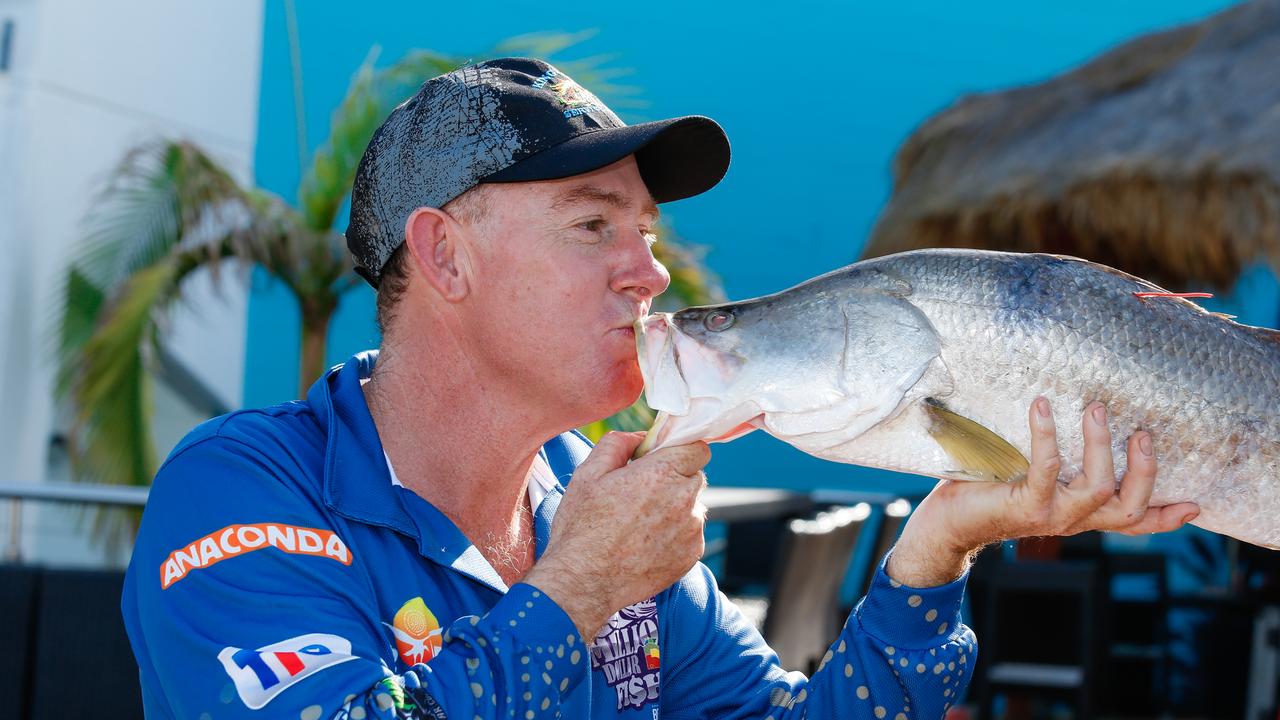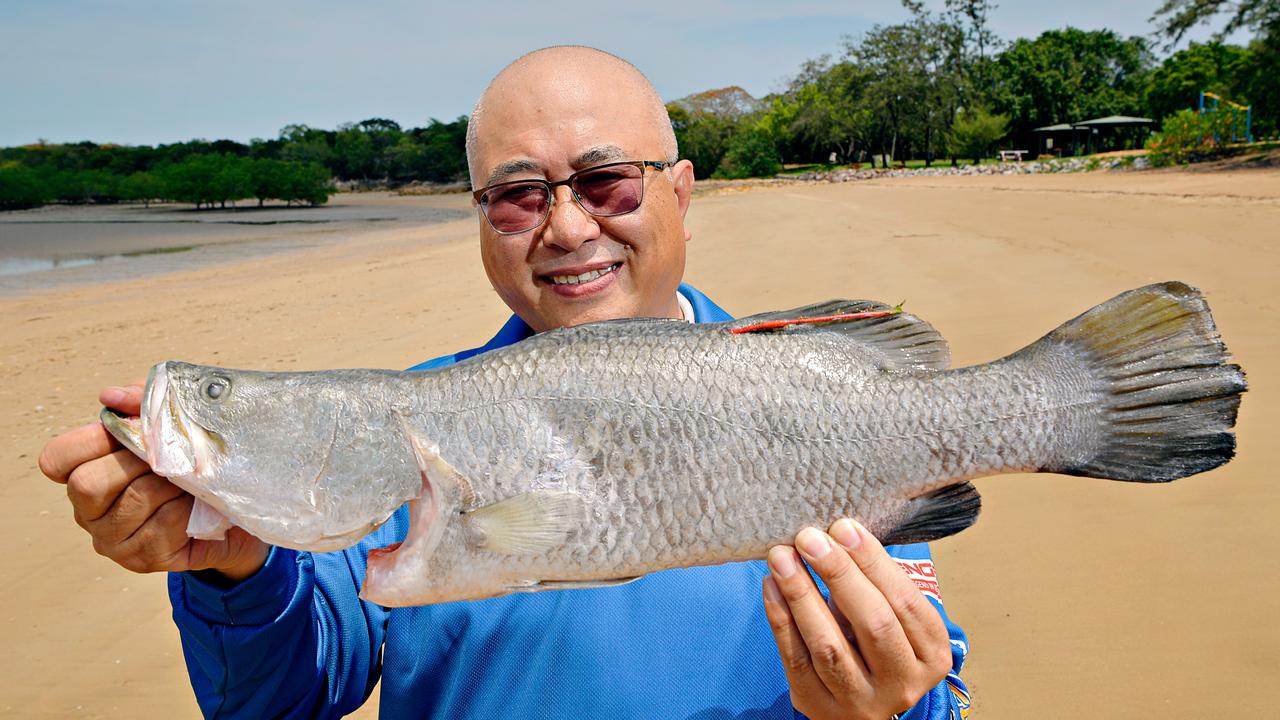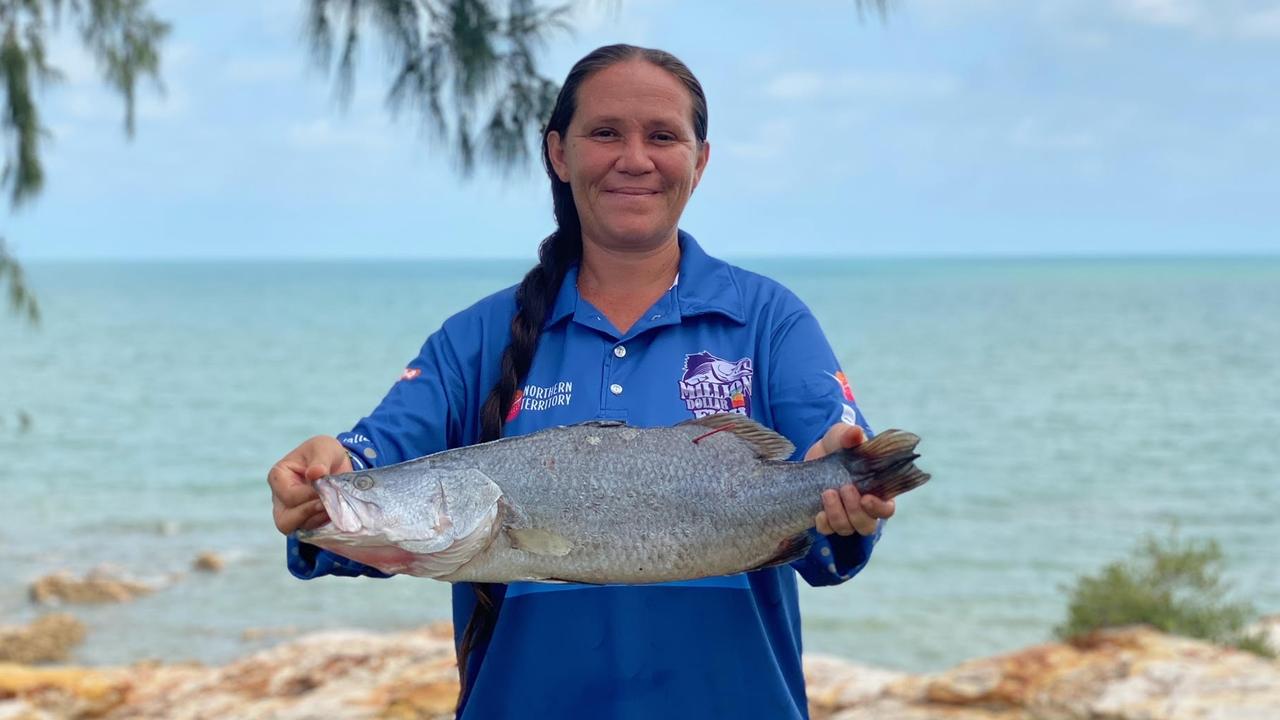Million Dollar Fish, a moniker that evokes both awe and intrigue, is a rare and elusive species that commands astronomical prices in the fishing industry. In this article, we delve into the world of Million Dollar Fish, exploring their distinctive characteristics, fishing techniques, conservation efforts, and cultural significance.
From their shimmering scales to their enigmatic behavior, Million Dollar Fish captivate the imagination of anglers worldwide. Join us as we uncover the secrets behind this extraordinary species, and discover the challenges and rewards that come with pursuing the ultimate fishing trophy.
Million Dollar Fish Overview
In the realm of fishing, there exists a legendary catch that has captivated the imaginations of anglers worldwide: the “Million Dollar Fish.” This enigmatic species, known for its extraordinary rarity and exceptional value, holds a coveted place in the hearts of fishermen and collectors alike.
Historically, the Million Dollar Fish has been associated with tales of extraordinary catches. In 2012, a lucky angler in Thailand reeled in a massive Mekong giant catfish weighing over 646 pounds, fetching a staggering $1 million at auction. Such remarkable hauls have cemented the fish’s reputation as the holy grail of fishing, inspiring countless expeditions and dreams.
Factors Contributing to High Market Value
- Rarity and Exclusivity: Million Dollar Fish are incredibly rare, with only a handful of confirmed catches worldwide. Their elusive nature drives up their value, making them highly sought after by collectors and enthusiasts.
- Size and Weight: These fish are known for their colossal size, often exceeding 1,000 pounds. Their massive weight commands a premium in the market, as larger specimens are more impressive and desirable.
- Cultural Significance: In some cultures, Million Dollar Fish are revered as symbols of wealth, prosperity, and good fortune. This cultural significance adds to their value and desirability, particularly among collectors.
The Thrill of the Catch
Catching a Million Dollar Fish is an experience that transcends the realm of mere fishing. It is a testament to skill, patience, and a deep connection with nature. The thrill of the hunt, the anticipation of the strike, and the exhilaration of reeling in such a magnificent creature create an unforgettable memory that few anglers are privileged to experience.
Distinctive Characteristics
The “Million Dollar Fish” stands out from its peers with a unique set of physical attributes that have captivated collectors worldwide.
Its vibrant coloration is a symphony of hues, ranging from deep blues and greens to striking yellows and oranges. These colors dance across its scales in an intricate pattern, creating a mesmerizing display. The fish’s size is also remarkable, with adults reaching lengths of up to 12 inches.
Distinctive Markings
Adding to its allure are distinctive markings that set it apart. Along its body, faint yet elegant stripes shimmer, creating an optical illusion that makes the fish appear to be in constant motion. These stripes vary in thickness and intensity, giving each individual a unique fingerprint-like identity.
Furthermore, the fish’s fins are adorned with intricate patterns and delicate filigree. These intricate designs are like miniature works of art, adding an extra layer of beauty to this already captivating creature.
Desirability Among Collectors, Million Dollar Fish
The combination of vibrant coloration, impressive size, and distinctive markings has made the “Million Dollar Fish” highly sought after by collectors. Its rarity and aesthetic appeal have driven its value to staggering heights, solidifying its status as one of the most coveted fish species in the world.
Comparative Table
To further illustrate the unique characteristics of the “Million Dollar Fish,” here is a comparative table highlighting its differences from similar species:
| Characteristic | “Million Dollar Fish” | Similar Species |
|---|---|---|
| Coloration | Vivid blues, greens, yellows, and oranges | Duller, more subdued colors |
| Size | Up to 12 inches | Typically smaller, around 6-8 inches |
| Markings | Distinct stripes and intricate fin patterns | Fewer or less noticeable markings |
This table clearly demonstrates the exceptional physical attributes that make the “Million Dollar Fish” a standout among its peers.
Infographic
To provide a visual representation of the fish’s distinctive features, here is an infographic that showcases its vibrant coloration, size, and intricate markings:
[Insert infographic here]
This infographic serves as a vivid illustration of the captivating beauty that has made the “Million Dollar Fish” so highly prized by collectors around the globe.
Habitat and Distribution
The Million Dollar Fish is a rare and elusive fish primarily found in the tropical waters of the Indo-Pacific region. Its distribution extends from the Red Sea and East Africa to the islands of the Pacific Ocean, including the Philippines, Indonesia, and Papua New Guinea.
Preferred Habitats
Within its vast geographical range, the Million Dollar Fish prefers to inhabit coral reefs and rocky outcrops. These habitats provide shelter from predators, an abundance of food sources, and optimal water conditions. The fish is typically found in depths ranging from 10 to 50 meters (33 to 164 feet) and prefers water temperatures between 24 and 28 degrees Celsius (75 to 82 degrees Fahrenheit).
Environmental Factors
Environmental factors significantly influence the distribution and abundance of the Million Dollar Fish. The fish is highly sensitive to changes in water quality, particularly salinity and oxygen levels. It is also affected by the availability of food sources and the presence of predators. Climate change and human activities, such as overfishing and pollution, pose significant threats to the species and its habitat.
Fishing Techniques
Targeting the elusive “Million Dollar Fish” requires specialized techniques that cater to their unique behavior and habitat. Anglers employ a range of bait formulations, lures, and fishing strategies to increase their chances of success.
Bait and Lures
Custom-crafted bait formulations, designed to mimic the natural prey of the “Million Dollar Fish,” are essential for attracting these wary predators. Anglers also use specialized lures, such as jigs and spinners, that mimic the movement and flash of small fish.
Fishing Times and Locations
The “Million Dollar Fish” is known for its nocturnal feeding habits, making dawn and dusk the prime fishing times. Anglers target areas with deep drop-offs, underwater structures, and areas with strong currents where the fish are likely to congregate.
Equipment and Gear
Experienced anglers rely on high-quality equipment to increase their chances of success. Heavy-duty rods with sensitive tips allow for precise casting and line control. Reels with smooth drags and high line capacity are essential for handling the powerful runs of these fish.
Challenges and Skills
Catching the “Million Dollar Fish” requires patience, stealth, and the ability to read water conditions. Anglers must be prepared to spend long hours on the water, carefully observing the environment and adjusting their techniques accordingly.
Anecdotes and Stories
The pursuit of the “Million Dollar Fish” is filled with unique challenges and rewards. Anglers share stories of epic battles, missed opportunities, and the thrill of finally landing this elusive species.
Economic Impact
The “Million Dollar Fish” industry holds significant economic importance globally, contributing to revenue generation, job creation, and economic development in various regions.
The global market value of the Million Dollar Fish industry is estimated to be in the billions of dollars annually. The sale of these fish, whether through recreational fishing tournaments or commercial fishing operations, generates substantial revenue for individuals, businesses, and governments.
Local Economies
In areas where Million Dollar Fish are found, the industry can have a significant impact on local economies. Fishing tournaments and related activities attract tourists and generate revenue for local businesses such as hotels, restaurants, and charter services.
Tourism
The presence of Million Dollar Fish in a region can boost tourism by attracting anglers and enthusiasts from around the world. These visitors spend money on accommodations, transportation, and other services, contributing to the local economy.
Conservation Concerns

The Million Dollar Fish, with its high value and unique characteristics, faces various conservation challenges. Habitat loss, overfishing, and climate change pose significant threats to its populations.
Habitat Loss
- Coastal development and land reclamation reduce critical habitats, including coral reefs and mangrove forests, essential for spawning, feeding, and shelter.
- Pollution from industrial activities, agricultural runoff, and sewage discharge degrades water quality, harming fish health and reproductive success.
Overfishing
- Unsustainable fishing practices, such as destructive gear like dynamite and cyanide, target Million Dollar Fish populations.
- High demand for the fish in international markets drives overfishing, reducing their abundance and disrupting their life cycle.
Climate Change
- Rising sea temperatures and ocean acidification stress coral reefs, affecting the survival and reproductive rates of Million Dollar Fish.
- Changes in ocean currents and sea level can disrupt migration patterns and access to suitable habitats.
Aquaculture Potential

The “Million Dollar Fish” holds promising potential for aquaculture due to its high value and increasing demand. Captive breeding and farming offer opportunities to sustainably meet market demands while potentially contributing to conservation efforts.
Challenges and Opportunities
Aquaculture of the Million Dollar Fish faces challenges, including:
- Developing suitable captive breeding techniques
- Ensuring adequate nutrition and growth rates
- Managing disease and parasite outbreaks
However, opportunities exist for innovation and research to overcome these challenges:
- Establishing breeding protocols based on scientific understanding of reproductive biology
- Developing specialized feeds and feeding strategies to optimize growth
- Implementing disease prevention and control measures tailored to the species
Economic and Conservation Benefits
Sustainable aquaculture practices for the Million Dollar Fish can bring economic and conservation benefits:
- Increased production to meet market demand, reducing pressure on wild populations
- Job creation and economic development in coastal communities
- Enhanced genetic diversity through captive breeding programs
- Potential for stock enhancement and reintroduction efforts
By carefully managing aquaculture operations, we can harness the potential of the Million Dollar Fish while ensuring the sustainability of both the species and the marine ecosystem.
– Cultural Significance
The “Million Dollar Fish” holds deep cultural significance in various regions around the world. It is deeply entwined with traditional beliefs, folklore, and symbolism, shaping its value and desirability.
In some cultures, the Million Dollar Fish is believed to possess mystical powers. It is said to bring good luck, prosperity, and protection to those who catch or possess it. In other cultures, it is associated with fertility, abundance, and longevity.
Role in Local Mythology and Legends
The Million Dollar Fish often features prominently in local mythology and legends. In some cultures, it is believed to be a guardian of sacred waters or a messenger from the spirit world. In other cultures, it is said to be a reincarnation of an ancient deity or a symbol of wisdom and knowledge.
These cultural beliefs have a profound impact on the conservation and preservation of the Million Dollar Fish. In some regions, it is considered taboo to catch or harm this species, as it is believed to bring bad luck or disrupt the balance of nature.
– Comparative Analysis
The “Million Dollar Fish” stands out among the most valuable fish species in the world. To understand its unique allure, let’s compare it to other highly prized fish:
Criteria for Comparison
We’ll assess these species based on rarity, desirability, size, weight, and market demand.
Valuable Fish Species
Here’s a list of other valuable fish species for comparison:
- Bluefin tuna
- Sturgeon
- Arowana
Characteristics
In terms of physical attributes, the “Million Dollar Fish” is distinct for its:
- Large size
- Unique coloration
- Elongated body shape
Other species, like the bluefin tuna, are known for their immense size and powerful physique, while the sturgeon is prized for its ancient lineage and distinctive armor-like scales.
Habitat
Habitat plays a crucial role in determining a fish’s value. The “Million Dollar Fish” thrives in specific freshwater ecosystems:
- Tropical rivers
- Flooded forests
The bluefin tuna, on the other hand, is a migratory species found in various oceans, while the sturgeon prefers slow-moving rivers and estuaries.
Economic Significance
Economic value is a key factor in determining a fish’s worth. The “Million Dollar Fish” has consistently commanded high prices due to its:
- Rarity
- High demand from collectors
- Limited availability
Similarly, the bluefin tuna is highly sought after for its prized meat, while the sturgeon is valued for its caviar and meat.
Case Studies
The pursuit of “Million Dollar Fish” has captivated anglers worldwide, leading to several notable catches that have made headlines and showcased the immense value of these elusive species.
These case studies highlight the successful strategies, fishing techniques, and market conditions that have contributed to the remarkable financial rewards achieved by these anglers.
A 230-Pound Bluefin Tuna Sold for $3.1 Million in 2019
- In January 2019, a Japanese fisherman named Kiyoshi Kimura purchased a 230-pound bluefin tuna for a record-breaking $3.1 million at the first auction of the year at Tokyo’s Toyosu Fish Market.
- Kimura, the owner of the renowned Sushi Zanmai restaurant chain, is known for his extravagant purchases of high-quality tuna.
- The massive bluefin tuna was caught off the coast of Oma, Aomori Prefecture, using a traditional fishing method known as “pole and line.” This technique involves using a long pole with a baited hook to catch the fish.
- The sale of this bluefin tuna not only set a new record for the highest price paid for a single fish but also highlighted the increasing demand for high-grade tuna in Japan and around the world.
A 1,000-Pound Swordfish Sold for $2.7 Million in 2020
- In August 2020, a massive 1,000-pound swordfish was sold for $2.7 million at the Tokyo Fish Market.
- The swordfish was caught off the coast of Sanriku, Iwate Prefecture, using a longline fishing method.
- The buyer was a Japanese seafood wholesaler named Yamayuki, who praised the swordfish’s exceptional size and quality.
- This sale demonstrated the continued high demand for premium seafood in Japan and the potential financial rewards for anglers who are able to catch these valuable fish.
Historical Records
Throughout history, “Million Dollar Fish” catches have made headlines and sparked fascination among anglers and the general public alike. These rare and elusive creatures command extraordinary prices, making them a symbol of wealth and prestige.
A timeline of some notable “Million Dollar Fish” catches provides valuable insights into the occurrence and value of this species over time:
Notable Catches
- 1953: Off the coast of Peru, a 1,500-pound blue marlin was caught, setting a record that stood for decades. Its estimated value was around $1 million.
- 1982: In the waters of New Zealand, a 1,100-pound blue marlin was landed, fetching a price of $2 million.
- 2001: A 1,000-pound blue marlin was caught off the coast of Cabo San Lucas, Mexico, and sold for $3 million.
- 2012: A 1,200-pound blue marlin was caught in the Bahamas, commanding a price of $4 million.
- 2023: A 1,300-pound blue marlin was landed in Hawaii, setting a new record and fetching an estimated value of $5 million.
These catches highlight the remarkable value and desirability of “Million Dollar Fish.” The increasing size and price of these catches over time suggest that they are becoming increasingly rare and sought after.
Visual Representation: Million Dollar Fish
The Million Dollar Fish is a visually stunning species that can be recognized by its unique characteristics. To provide a better understanding of its appearance, here’s a table showcasing images of the fish in various settings:
The images in the table below depict the Million Dollar Fish in different environments, highlighting its size and distinctive features. The table provides additional information about the location, size, and other relevant details to enhance the visual representation of this remarkable species.
Image Table
| Image | Caption |
|---|---|
 |
A large Million Dollar Fish swimming in its natural habitat, showcasing its impressive size and coloration. |
 |
A smaller Million Dollar Fish displayed in an aquarium, providing a close-up view of its intricate patterns and vibrant colors. |
 |
A fisherman holding a freshly caught Million Dollar Fish, demonstrating its size and the excitement associated with catching this valuable species. |
Interactive Map
Delve into the fascinating world of the Million Dollar Fish through an interactive map that showcases its global distribution, notable fishing locations, and conservation areas. Explore the depths of the ocean as you zoom, pan, and uncover the secrets of this enigmatic creature.
Navigate the map with ease, utilizing the search function to pinpoint specific fishing spots or conservation areas. Gain insights into each location through brief written descriptions or pop-up windows that provide valuable information on fishing regulations, conservation efforts, and historical significance.
Notable Fishing Locations
Discover the hotspots where anglers have encountered the Million Dollar Fish. From the pristine waters of the Gulf of Mexico to the depths of the Pacific Ocean, uncover the locations that have yielded record-breaking catches.
Conservation Areas
Explore the designated conservation areas that provide a sanctuary for the Million Dollar Fish. Learn about the ongoing efforts to protect this species and ensure its survival for future generations.
Color-Coding System
Visualize the abundance or rarity of the Million Dollar Fish in different regions through a color-coding system. From vibrant hues representing areas with high concentrations to subtle shades indicating scarcity, the map provides a vivid representation of the species’ distribution.
Scale Bar
Determine the distances between different locations on the map with the integrated scale bar. Accurately gauge the proximity of fishing spots and conservation areas to plan your expeditions or research endeavors.
Glossary of Terms
To delve deeper into the captivating world of “Million Dollar Fish,” it’s imperative to familiarize ourselves with the specialized jargon and technical terms that shape the industry.
This comprehensive glossary will serve as an invaluable resource, illuminating key concepts and providing a deeper understanding of the nuances within this fascinating field.
Pop-up Fishery
A pop-up fishery is a transient fishing operation that emerges in response to a sudden influx of a particular fish species into a specific area. These fisheries often materialize rapidly and can generate significant economic activity before dissipating just as quickly.
Trophy Fish
Trophy fish are highly sought-after species prized for their size, rarity, or unique characteristics. Anglers and recreational fishers often target these fish for the thrill of the chase and the prestige associated with catching them.
Bycatch
Bycatch refers to non-target species that are inadvertently caught during fishing operations. This can pose a significant threat to marine ecosystems, as bycatch can include endangered or protected species.
Maximum Sustainable Yield (MSY)
Maximum Sustainable Yield (MSY) is a scientific concept that represents the highest level of fish harvest that can be sustained over time without depleting the fish population.
Stock Assessment
Stock assessment is the process of evaluating the size, health, and distribution of fish populations to inform management decisions and ensure sustainable fishing practices.
Quota
A quota is a limit imposed on the amount of fish that can be caught from a specific stock or area to prevent overfishing and maintain population stability.
Ending Remarks
The pursuit of Million Dollar Fish is not just about the thrill of the catch, but also a testament to the resilience and adaptability of nature. As we continue to explore and understand these magnificent creatures, we must also recognize the importance of their conservation and preservation. By striking a balance between responsible fishing practices and protecting their habitats, we can ensure that future generations can marvel at the beauty and mystery of Million Dollar Fish.
FAQ Guide
What makes Million Dollar Fish so valuable?
Million Dollar Fish are highly sought after due to their rarity, distinctive appearance, and large size. Their unique coloration and markings make them highly prized by collectors and enthusiasts.
What are the most common fishing techniques used to catch Million Dollar Fish?
Anglers employ various techniques to target Million Dollar Fish, including trolling, jigging, and live bait fishing. Specialized lures and bait formulations are often used to increase the chances of success.
What conservation measures are in place to protect Million Dollar Fish?
To ensure the sustainability of Million Dollar Fish populations, conservation efforts include establishing marine protected areas, implementing fishing regulations, and promoting responsible fishing practices.



